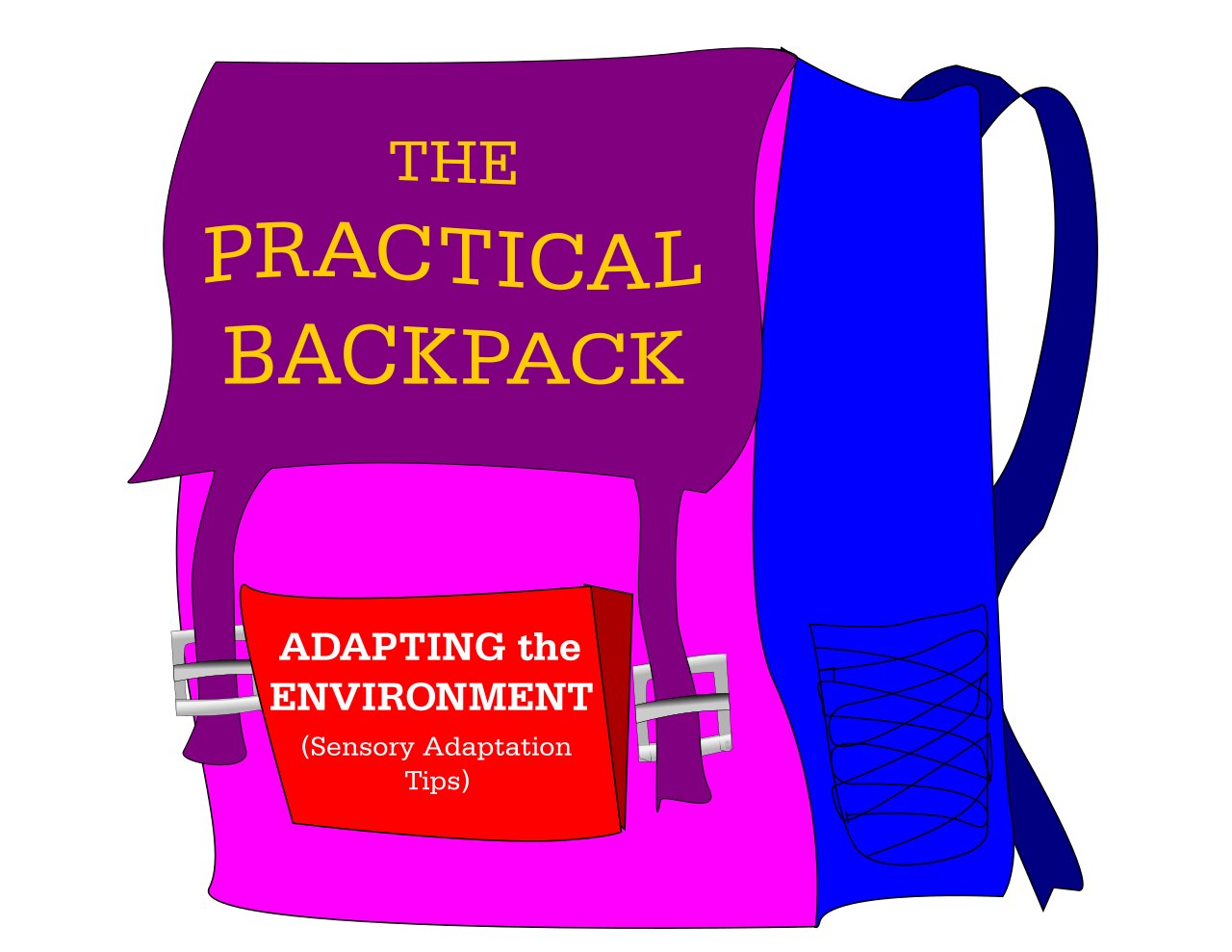THE PRACTICAL BACKPACK 121 Tips For Adapting Your Sensory Child’s Environment, Part Two

THE PRACTICAL BACKPACK Strategies and tips for situations and behaviors
Quick personal physical and emotional adaptation tips for your sensory child
Here’s the conclusion of this two-part Practical Backpack series of quick environmental and personal adaptation tips.
Personal physical adaptation tips
- Optimize your child’s chances of success by ensuring that he gets enough sleep
- Similarly, your child’s chances of success increase when she is well fed regularly
- Ensure that your child eats a well-balanced diet, with limited sugar and no caffeine
- Avoid junk foods and any other foods that seem to affect your child’s mood
- Bring healthful sensory snacks when you go out; don’t let your child get “hangry”
- Some examples of healthy, chewy foods are: celery, carrots, apples, nuts, fruit leather, beef jerky
- Also try thick liquids requiring a straw (e.g., milkshakes, smoothies, gelatin, pudding)
- Have your child go to the bathroom before you leave home
- Get your child extra tight or extra loose clothing depending on his sensory needs
- Buy extra soft clothing; cotton works well
- No coarse fabric
- Buy tagless clothing or
- Cut labels and tags out of clothing
- Buy smooth clothing with no raised seamsBuy smooth clothing with no raised seams
- Buy clothing with minimal seams if possible
- Buy seamless socks or
- Wear socks inside out
- If underwear seams are irritating, wear them inside out
- Cut tight elastics for comfort
- Determine whether your child prefers overalls rather than pants with a waistband
- Prewash all clothing to soften it
- Compression garments can be comforting and calming
- So are weighted vests
- Indoors, a weighted blanket or lap pad can be soothing
- Improve ventilation in the bathroom to reduce or eliminate odors
- Install a cushioned toilet seat so it’s not so cold
- Have your child use an inflatable seat cushion to allow slight movement during seated activities to help increase attention
- Wash surfaces often to prevent them getting sticky or dirty
- Keep your child’s hands and face clean if feeling dirty or sticky is an issue
- Take regular breaks
- Have your child sit or stand so people can approach only from the front
- Have your child sit near a wall
- Teach family members about your child’s sensory needs and about avoiding unwanted touch
- Don’t allow people to hug or touch your child without his approval
Personal emotional adaptation tips
- Be consistent
- Follow a routine
- Give advance warning of any changes in routine
- Prepare your child mentally for unfamiliar or challenging situations
- Use sensory regulation activities regularly
- Allow plenty of time for transitions
Final note
Please don’t limit yourself to this list of tips; use them to develop environmental adaptations that work best for you and your family.
Looking ahead:
I hope this mini-series has given you useful material for your backpack of strategies. In upcoming posts, we’ll be discussing more tips, tricks and tools to help manage various aspects of your child’s daily life.
Are there specific issues which you would like advice on how to manage? Please share your thoughts in the comments section below. Also, let me know there or via email what topics you would like to discuss or hear more about.
Feel free to share or quote from this blog (with attribution, please, and if possible, a link), and to repost on social media.
I look forward to hearing from you!
All the best,
